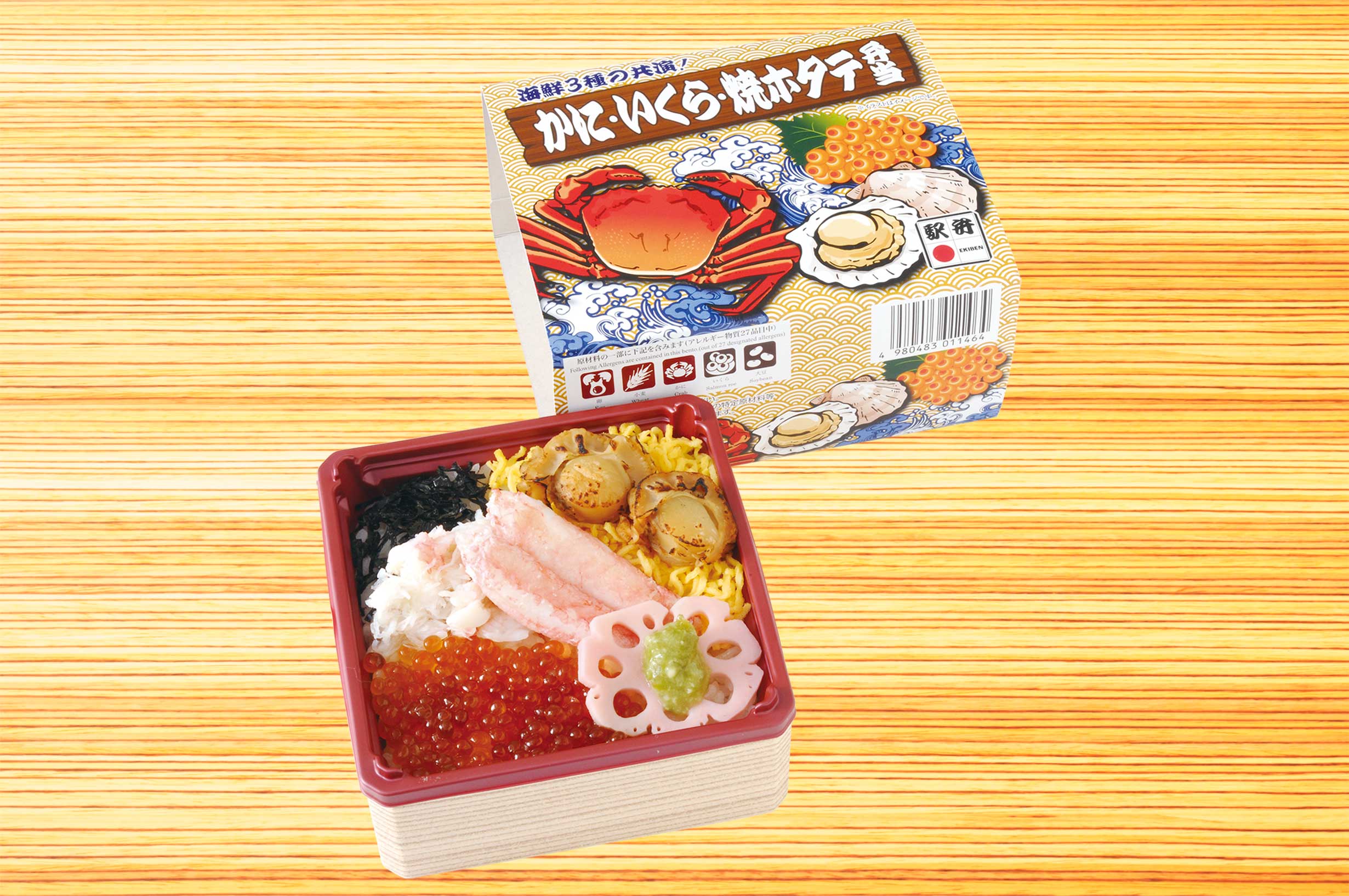Ikura De Yarimasu: A Deep Dive Into The World Of Salmon Roe And Its Cultural Significance
Have you ever wondered what the fuss is all about with ikura? If you're a sushi enthusiast, chances are you've already tasted this luxurious treat. Ikura de yarimasu is more than just a phrase—it's a celebration of one of Japan's most beloved seafood delicacies. Today, we're diving headfirst into the world of ikura, exploring its origins, culinary uses, and cultural importance. So grab your chopsticks, and let's get started!
Ikura, or salmon roe, has been a staple in Japanese cuisine for centuries. It's not just food; it's an experience. Each perfectly round, translucent bead bursts with flavor, delivering a salty, oceanic kick that's hard to resist. But what exactly is ikura de yarimasu? In short, it's a phrase often used in Japanese dining culture to express excitement when enjoying dishes featuring salmon roe. It's like saying "let's do this!" but with a lot more flair.
As we explore this topic, you'll discover everything from the nutritional benefits of ikura to its role in traditional Japanese dishes. Whether you're a foodie, a culture enthusiast, or simply curious about what makes ikura so special, this article is your ultimate guide. Let's jump right in and uncover the secrets behind this culinary gem.
- Why Sauth Hindi Movies Are Capturing Hearts Worldwide
- Hd Hub 4u South Movie Your Ultimate Destination For Blockbuster Entertainment
Table of Contents
- The History of Ikura
- Nutritional Value of Ikura
- How Ikura is Prepared
- Cultural Significance
- Delicious Ikura Recipes
- Health Benefits
- Different Varieties of Ikura
- Best Pairings for Ikura
- Ikura Around the World
- FAQs About Ikura
The History of Ikura
Ikura has a rich history that dates back centuries. The word "ikura" itself comes from the Russian word "ikra," which means fish roe. This connection highlights the historical trade relationships between Japan and Russia, particularly in the seafood industry. Over time, ikura became a staple in Japanese cuisine, prized for its unique texture and flavor.
In the early days, ikura was primarily used in traditional dishes such as sushi and sashimi. However, as global trade expanded, so did the availability of salmon roe. Today, ikura is enjoyed worldwide, with each culture adding its own twist to this culinary treasure.
From Russia with Love
The introduction of ikura to Japan was no accident. During the late 19th century, Russian traders brought salmon roe to Japanese markets, where it quickly gained popularity. The Japanese refined the preparation process, creating the ikura we know and love today. This fusion of cultures has resulted in a dish that's both authentic and adaptable.
- 5movierulz Kannada The Ultimate Guide To Unlocking The Hidden World Of Movies
- 5movierulzcom The Controversial World Of Movie Streaming And Downloads
Nutritional Value of Ikura
Ikura isn't just delicious; it's also incredibly nutritious. Packed with essential vitamins and minerals, salmon roe is a powerhouse of health benefits. Let's break it down:
- Omega-3 Fatty Acids: Ikura is rich in omega-3s, which are great for heart health and reducing inflammation.
- Vitamin D: Helps strengthen bones and supports immune function.
- Protein: Provides essential amino acids that aid in muscle repair and growth.
- Vitamin B12: Essential for brain function and the production of red blood cells.
With all these nutrients, it's no wonder ikura is considered a superfood by many health enthusiasts. So, the next time you're enjoying a bite of ikura, remember that you're also doing your body a favor.
How Ikura is Prepared
The preparation of ikura is a delicate process that requires precision and care. Traditionally, fresh salmon roe is carefully removed from the fish and treated with salt and sometimes soy sauce to enhance its flavor. This curing process not only preserves the roe but also brings out its natural umami taste.
Modern Techniques
While the traditional method remains popular, modern chefs have introduced new techniques to prepare ikura. Some use innovative curing methods, while others experiment with different seasonings to create unique flavor profiles. Whatever the method, the goal is always to maintain the integrity and quality of the roe.
Cultural Significance
In Japan, ikura holds a special place in the culinary landscape. It's often served during celebrations and special occasions, symbolizing prosperity and abundance. The vibrant orange color of the roe is also associated with good luck and happiness, making it a popular choice for festive dishes.
Ikura de yarimasu has become a catchphrase in Japanese dining culture, reflecting the excitement and joy of enjoying this delicacy. Whether it's a casual sushi dinner or a formal banquet, ikura adds a touch of elegance and sophistication to any meal.
Delicious Ikura Recipes
Ready to try your hand at cooking with ikura? Here are a few recipes to get you started:
Ikura Donburi
This classic dish features a bowl of steaming hot rice topped with fresh ikura. It's simple yet incredibly satisfying, with the salty roe perfectly complementing the mild flavor of the rice.
Ikura Gohan
For a more elaborate dish, try making ikura gohan. This recipe involves cooking rice with ikura and a variety of seasonings, resulting in a flavorful and aromatic meal.
Health Benefits
Beyond its taste and cultural significance, ikura offers numerous health benefits. The high levels of omega-3 fatty acids are known to improve heart health, reduce inflammation, and even boost brain function. Additionally, the vitamins and minerals found in ikura contribute to overall well-being, making it a smart choice for health-conscious individuals.
Different Varieties of Ikura
Not all ikura is created equal. Depending on the source of the salmon roe, the flavor and texture can vary significantly. Here are a few popular varieties:
- Chum Salmon Roe: Known for its small, delicate beads and mild flavor.
- King Salmon Roe: Larger beads with a rich, buttery taste.
- Sockeye Salmon Roe: Vibrant orange color and a strong, distinct flavor.
Each variety brings something unique to the table, allowing chefs and home cooks alike to experiment with different flavors and textures.
Best Pairings for Ikura
Ikura pairs beautifully with a variety of ingredients, enhancing the flavors of both. Here are some popular pairings:
- Avocado: Creamy and mild, avocado balances the saltiness of ikura perfectly.
- Wasabi: A touch of wasabi adds a spicy kick that complements the oceanic notes of the roe.
- Cucumber: Refreshing and crisp, cucumber provides a refreshing contrast to the rich flavor of ikura.
With so many options, the possibilities are endless. Get creative and find your favorite combination!
Ikura Around the World
While ikura is most commonly associated with Japanese cuisine, it has made its way into kitchens around the globe. Chefs from various cultures have embraced this delicacy, incorporating it into their own traditional dishes. From Italian pasta dishes to Mexican ceviche, ikura's versatility knows no bounds.
Global Fusion
The fusion of ikura with international cuisines has led to some truly innovative dishes. For example, ikura has been used in gourmet burgers, adding a luxurious touch to this classic American favorite. Similarly, it's been paired with French-inspired sauces, creating a sophisticated dining experience.
FAQs About Ikura
Still have questions about ikura? Here are some frequently asked questions:
What is Ikura?
Ikura is salmon roe, or the eggs of the salmon fish. It's commonly used in Japanese cuisine and is prized for its unique texture and flavor.
How is Ikura Prepared?
Ikura is typically prepared by curing fresh salmon roe with salt and sometimes soy sauce. This process enhances its flavor and preserves the roe.
Is Ikura Healthy?
Yes, ikura is packed with essential nutrients such as omega-3 fatty acids, vitamin D, and protein, making it a healthy addition to your diet.
As we wrap up our journey through the world of ikura, it's clear that this humble seafood delicacy has much to offer. From its rich history to its numerous health benefits, ikura continues to captivate food lovers around the globe. So the next time you hear someone say "ikura de yarimasu," you'll know exactly what they're talking about. Don't forget to share your newfound knowledge with friends and family, and maybe even try your hand at cooking with ikura yourself. Your taste buds will thank you!
- 3 Movie Rulz Your Ultimate Guide To Cinema Magic That Rocks
- Hd Hub 4u South Movies Your Ultimate Destination For Cinematic Bliss

http//www.ekiben.or.jp/daimasu/images/Kani_Ikura_YakiHotate.jpg

IKURA Oh!SUSHI

Ikura Sushi Traditional Rice Dish From Japan